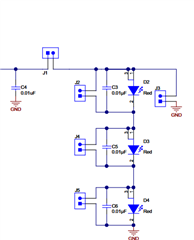Other Parts Discussed in Thread: TPS92611-Q1
Tool/software:
Dear e2e support,
I don't see any obvious reason why our EVM is limited to 16Vin max
Could you tell us more about it? is it just to limit the heat dissipation depending the current and number of leds?
Regards,


